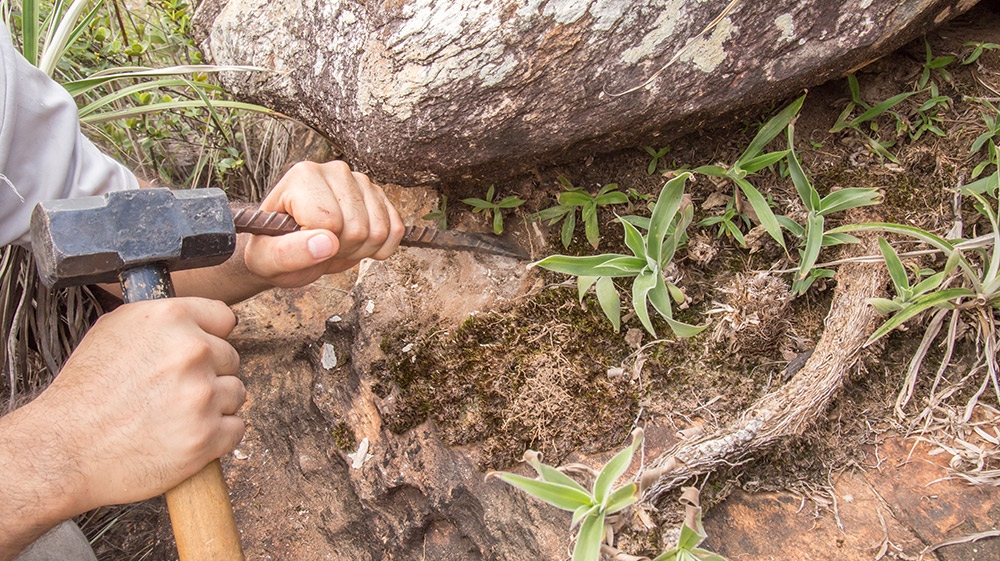


It took a hammer and chisel to remove samples from the soil where Barbacenia macrantha, one of the bacteria described in the article, lives (photo: Rafael Soares Correa de Souza/GCCRC-UNICAMP)
Published on 07/15/2024
Agência FAPESP* – A study conducted at the Genomics for Climate Change Research Center (GCCRC) at the State University of Campinas (UNICAMP) has been named one of the three most impactful in 2023 by the editors of The ISME Journal – a journal dedicated to the field of microbial ecology.
Entitled “Plant microbiomes harbor potential to promote nutrient turnover in impoverished substrates of a Brazilian biodiversity hotspot”, the paper describes the discovery of soil bacteria that are highly efficient at capturing and solubilizing phosphorus, making the nutrient available to plants. These microorganisms were found in a savanna-like montane ecoregion known as Campos Rupestres (“rocky meadows”) in central Brazil. The area is known for its high plant diversity, despite having very acidic and phosphorus-poor soils.
The article is the result of a doctoral thesis by Antônio Camargo and included contributions from Rafael S. C. de Souza, Juliana José, Isabel R. Gerhardt, Ricardo A. Dante, Supratim Mukherjee, Marcel Huntemann, Nikos C. Kyrpides, Marcelo F. Carazzolle, and Paulo Arruda.
The results were published by Agência FAPESP in December 2022 (read more at: agencia.fapesp.br/40441).
The UNICAMP study showed that these bacteria found in the Campos Rupestres have about 25% more genes related to phosphorus solubilization than microorganisms found in other environments, allowing plants such as Vellozia epidendroides and Barbacenia macrantha to survive in adverse conditions. The plants, in turn, secrete organic compounds through their roots that attract these bacteria, forming a symbiotic relationship that facilitates plant nutrition.
The discovery paves the way for the development of new biofertilizers that could reduce Brazil’s dependence on imported phosphate fertilizers, reduce the environmental and economic impacts associated with the use of chemical fertilizers, and contribute to more sustainable agriculture.
Impact
The article selection process consisted of two main phases. The first involved a set of metrics related to the impact of the article within and outside of academia. In the second phase, the articles were evaluated for their content, including the assessment of high-impact articles that raised the profile of The ISME Journal and highlighted exceptional discoveries in the field of microbial ecology.
Since going live in December 2022, the article has received more than 11,000 views, 20 citations, and an Altimetrics Score of 88 – which measures engagement and dissemination of research in online journals, social networks, and blogs.
The Altimetrics Score placed the winning article in the top 3% of the 484,069 articles published in the same period in all journals, demonstrating its relevance and impact. Specifically, in The ISME Journal, the article is currently ranked second out of 35 texts of a similar age. These data indicate that the study has been widely referenced and recognized both within and outside of academia.
The GCCRC is an Engineering Research Center (ERC) created by FAPESP and the Brazilian Agricultural Research Corporation (EMBRAPA) at UNICAMP.
More information about The ISME Journal Best Paper Award 2023 can be found at: www.isme-microbes.org/isme-journal-best-paper-award-2023.
* With information from the GCCRC.
Source: https://agencia.fapesp.br/52204